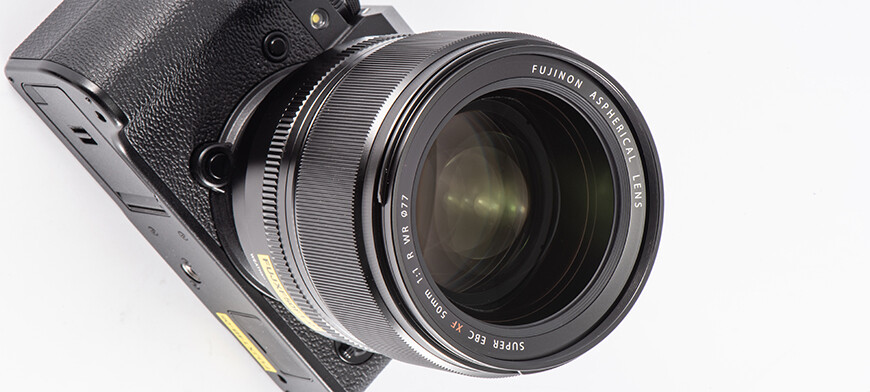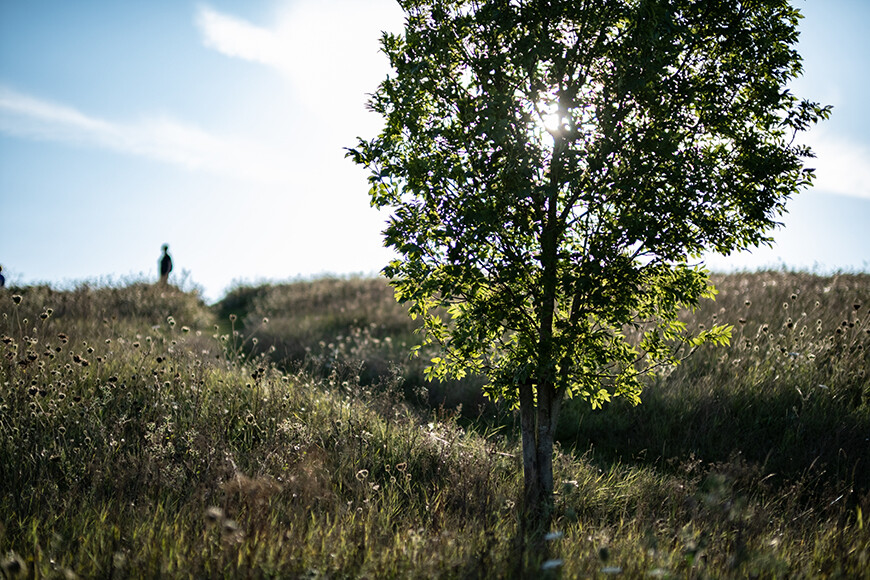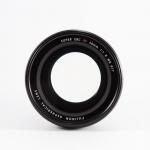
Hands on: Fujifilm XF50mm f/1.0 R WR
Posted on Sep 3, 2020
Fujifilm originally had an XF33mm f/1.0 lens in its roadmap, but that concept was shelved when the designers realised the lens would be too big and heavy for a high-performing AF lens. In a welcome show of openness, this was announced live at the 2019 Fujifilm Shibuya Summit – check it out on YouTube. The plan was then to go for an XF50mm f/1.0 that would be 35% smaller than the proposed 33mm f/1.0.
A year later, the XF50mm f/1.0 will be available from the end of this September with a guide price of £1499. I got the chance to use a pre-production sample, and we’ll have a test of a final version as soon as we get a production sample.
Fitted on a Fujifilm X-T4, I thought the balance of the combination was good. The lens weighs 850g and the X-T4 610g, so it is slightly but not excessively front-heavy, but that’s fine and the lens sits comfortably in the left hand. There’s no lens image stabiliser, the aperture ring is click-stopped in 0.3EV steps with an A setting, just like most XF lenses, and the broad manual focus ring is large with a smooth operation. Fujifilm tells us the manual focus responsiveness is greatly improved in this lens.
The XF50mm f/1.0 is autofocus, but not with the linear motor found on other XF lenses. Autofocus on our sample was quick, responsive and smooth, and there was a quiet whirr as the focus motor leapt into action. In quiet situations, you will pick up the sound of focus motor on video, but if there’s ambient noise, the sound is masked. The lens is compatible with face and eye detect systems.
If you prefer to manually focus, the lens covers the whole focusing range in one third rotation of the focusing barrel. Manual focus is selected from the camera body and there’s not the pull/push AF/MF clutch found on other XF lenses.
The lens focuses to 70cm and the filter thread is 77mm, a popular size.

It’s when there’s not much light around that fast lenses come into their own, but it’s important that they can perform well at their widest apertures. This image was taken on a pre-production lens and final lens quality may vary, but the signs are promising. This was shot on a Fujifilm X-T4 at ISO 800 with an exposure of 1/850sec at f/1.0
In the short time I had with the lens, I took it walk around the local town, keen to shoot as much as possible at the wider apertures – no point having a f/1.0 lens and using it at f/11. It was sunny and even at ISO 160 the required shutter speed was over the 1/8000sec top mechanical speed, but no problem as the X-T4 automatically switched over to the electronic shutter.
Of course, it’s when the light levels drop that fast lenses like this come into their own, enabling shake-free shots at medium ISO speeds for the best possible picture quality in the situation. The X-T4 has a five-axis 5EV benefit in-body image stabiliser, which obviously helps a great deal, but not every buyer of this lens will have this body. So to see what sort of shutter speed I could get, I turned off the stabiliser and took sets of images at a range of slow shutter speeds. In this simple test, I think I’d be confident at shooting handheld at 1/30sec for pin-sharp shots without IBIS; with IBIS switched on I had a decent three out of five success with 1/2sec.

Shoot with Fujifilm’s 50mm f/1.0 R WR at its widest aperture and there’s not much depth-of-field and you can get lovely selective focusing images. This shot was taken with an X-T4 at ISO 160 and the bright light and fast aperture meant that the camera automatically switched over to its electronic shutter – this was taken at f/1.0 and the shutter speed set was 1/8500sec. Sample image taken on a pre-production lens and final lens quality may vary
Bearing in mind that my sample was pre-production and a full production sample could be even better, the pictures I got out of this lens looked impressive. A few tripod shots of a brick wall also showed that the lens is very respectably sharp edge to edge at f/1.0. A proper resolution test will come when we get hold of a production sample. Across the frame, light evenness was very good from f/2 onwards and there were signs of gentle vignetting at wider apertures, but that’s easily correctable.
In terms of the lens in use, I found the autofocus to be fast and sensitive with the camera in single-point and zone AF modes. I did have the camera in AF+MF mode so I could tweak focus if needed, which I did quite often but that’s because depth-of-field is very limited at the wide apertures so precision is extra important.
So far, so good. The XF50mm f/1.0 R WR is a fabulous lens and will undoubtedly appeal to documentary, social and street photographers and for such a fast optic, its price isn’t outrageous. Of course, we will reserve final judgement until we get to try a production sample.

Features at a glance
- Price: £1499, available from 24 September 2020
- 35mm equivalent focal length: 76mm
- Construction: 12 elements in nine groups
- Special glass: One aspherical element, two ED elements
- Filter size: 77mm
- Minimum focus: 70cm
- Dust and weather sealing: Yes, in 11 places. Works down to -10°Ç
- Dimensions: 87×103.5mm
- Weight: 850g
Don’t forget to sign up to receive our newsletter below, and get notified about the new issue, exclusive offers and competitions.
Have you heard The Photography News Podcast? Tune in for news, techniques, advice and much more! Click here to listen for free.




